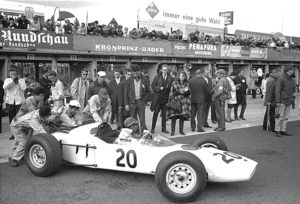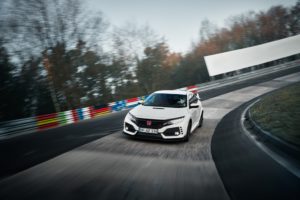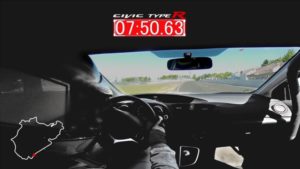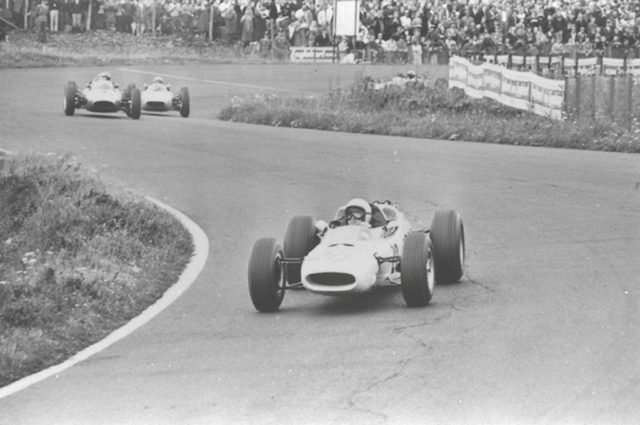This week, Honda returns to the Nurburgring Nordschleife as Münnich Motorsport and Boutsen Ginion Racing contest the third round of the 2018 FIA World Touring Car Cup with the latest Honda Civic Type R TCR at the world-famous German circuit.
Last year, the road-going version of the new Civic Type R set a new benchmark lap time for front-wheel drive production cars at the Nordschleife: a development car lapped the track in 7 minutes 43.8 seconds.
The company’s relationship with the Nurburgring Nordschleife goes back more than 50 years to the earliest days of its car manufacturing business. The marque’s 1964 debut at the circuit was also the first time that a Japanese manufacturer had competed in Formula 1, as American racer Ronnie Bucknum crossed the start line of the German Grand Prix driving the RA271.

In the 1964 season, the Honda RA271 was the only car with a V12 engine in a grid with mostly V8s
Its successor – the RA272 – was the most powerful car of the 1.5-litre F1 era. The latter would also claim Honda’s first Formula 1 victory just a year later.
At the 500 km of Nurburgring race in 1964, the S600 achieved the marque’s first-ever class win in Europe. It finished top of the rankings for the Grand Touring 1000cc (GT1.0) class. New Zealander Denny Hulme was behind the wheel. Its successor, the S800 also claimed a victory at the Nurburgring. This car finished top of the GT1.0 class in 1967 in the hands of Belgian nationals Carl Smet and Hugues de Fierlant.

Honda’s activity at the Nurburgring is not confined to racing
During the development of the NSX supercar in the late 1980s, the marque established a new test site just outside the legendary circuit. The story of the facility is really fascinating. Ayrton Senna did shakedown tests of a prototype car at the Suzuka Circuit in Japan. The legendary F1 driver had a lot of feedback during the sessions. The Nurburgring facility was largely a response to his reaction. Honda realised it needed to significantly improve the rigidity of the NSX. The engineers deemed Nurburgring’s challenging 20.8 km course as the perfect place to do it.
Honda’s tests at the German circuit represented the first time that a Japanese automaker had conducted such in-depth evaluation at an overseas location. The engineers spent months of honing the chassis and suspension setup. The car’s rigidity had been increased by 50% compared to the earlier tests in Suzuka. In this respect, the Nurburgring had a vital impact on the dynamic performance of the NSX.

Today, Honda’s base at the Nurburgring is in use for numerous test programmes
Beyond the first-generation NSX, the second-generation supercar also went through a development process there, as well as the S2000 sports car and many versions of Type R models. It has also used the track for evaluation work on its American premium brand Acura cars.
Even outside Germany, Honda benefits from the influence of the Nurburgring. Its extensive Takasu Proving Ground in Hokkaido, Japan, has replicated many of the roads in and around the Nordschleife. That enables Honda to further hone the ride and handling characteristics of its vehicles.
Honda first held the front-wheel-drive production car record for the circuit with the FK2 Type R. A development car achieved a 7 minutes 50.63 seconds lap. The current record holder – the FK8 Type R – improved upon that time by nearly seven seconds.
Good morning from the @nuerburgring. #WTCR qualifying isn’t until this evening, so we’ve told @YannEhrlacher to make himself useful. #TypeR pic.twitter.com/uOjjYkiZL4
— Honda Racing WTCR (@hondaracingwtcr) May 11, 2018

































